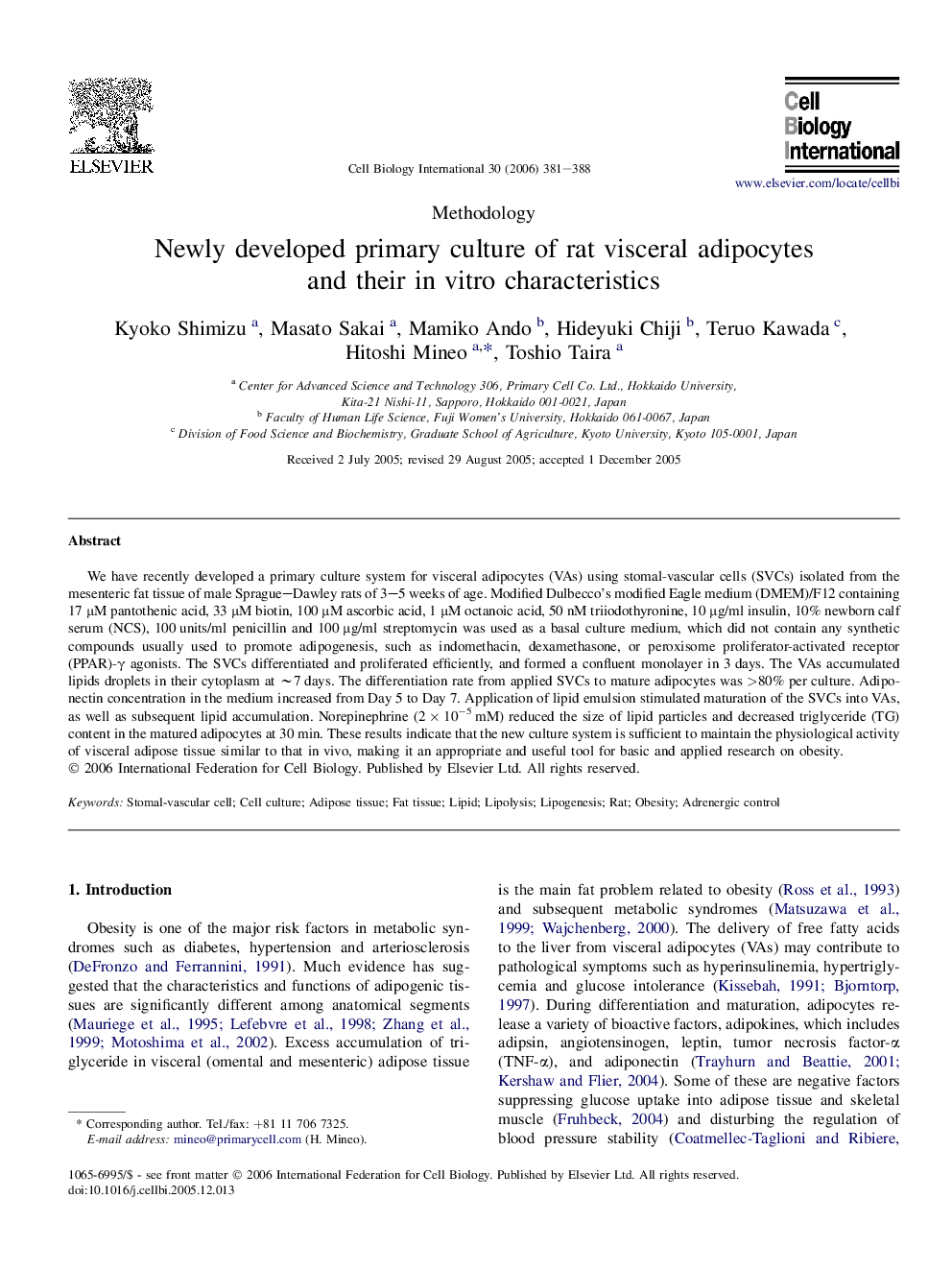| Article ID | Journal | Published Year | Pages | File Type |
|---|---|---|---|---|
| 2067961 | Cell Biology International | 2006 | 8 Pages |
Abstract
We have recently developed a primary culture system for visceral adipocytes (VAs) using stomal-vascular cells (SVCs) isolated from the mesenteric fat tissue of male Sprague-Dawley rats of 3-5 weeks of age. Modified Dulbecco's modified Eagle medium (DMEM)/F12 containing 17 μM pantothenic acid, 33 μM biotin, 100 μM ascorbic acid, 1 μM octanoic acid, 50 nM triiodothyronine, 10 μg/ml insulin, 10% newborn calf serum (NCS), 100 units/ml penicillin and 100 μg/ml streptomycin was used as a basal culture medium, which did not contain any synthetic compounds usually used to promote adipogenesis, such as indomethacin, dexamethasone, or peroxisome proliferator-activated receptor (PPAR)-γ agonists. The SVCs differentiated and proliferated efficiently, and formed a confluent monolayer in 3 days. The VAs accumulated lipids droplets in their cytoplasm at â¼7 days. The differentiation rate from applied SVCs to mature adipocytes was >80% per culture. Adiponectin concentration in the medium increased from Day 5 to Day 7. Application of lipid emulsion stimulated maturation of the SVCs into VAs, as well as subsequent lipid accumulation. Norepinephrine (2 Ã 10â5 mM) reduced the size of lipid particles and decreased triglyceride (TG) content in the matured adipocytes at 30 min. These results indicate that the new culture system is sufficient to maintain the physiological activity of visceral adipose tissue similar to that in vivo, making it an appropriate and useful tool for basic and applied research on obesity.
Related Topics
Life Sciences
Biochemistry, Genetics and Molecular Biology
Biophysics
Authors
Kyoko Shimizu, Masato Sakai, Mamiko Ando, Hideyuki Chiji, Teruo Kawada, Hitoshi Mineo, Toshio Taira,
